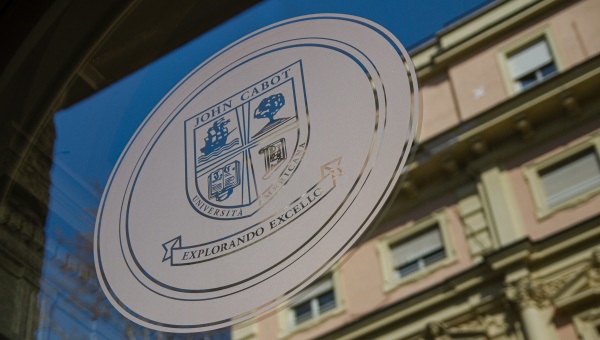Guarini Institute: Jewish and Ukrainians Writers Compared
Sponsored by the Guarini Institute, Il Messaggio dell’Icona – a Roman bookstore specializing in Eastern European cultural and religious topics – hosted Amelia M. Glaser, professor of Slavic Studies at UC San Diego, to discuss her book Jews and Ukrainians in Russia’s Literary Borderlands, published by Northwestern University Press.
Glaser argued that Russian Literature needs to be viewed primarily through a different prospective, rather the predictable Russian capitals, Moscow and Saint Petersburg, but by way of its fascinating “borderland” in the Ukraine culture. She explained how Ukrainians, Jews, Poles, Russians and Gypsies co-existed and influenced each other in the art of writing. First, she focused in particular on the relationship between the Ukrainian writer in Russian Nikolai Gogol and the Jewish writer in Hebrew and Yiddish Sholem Aleichem; second, she talked about the importance of the market or fair in Ukrainian and Jewish fiction.
What emerged from Glaser’s discussion was the rich cultural environment due to the multi-ethnic and multicultural Ukraine in the 19th and the early 20th centuries, and the synthesis of literary cultures. The author stressed the point on the influence of Gogol on Sholem Aleichem, even if Gogol himself was a literary idol for Sholem Aleichem, even though Gogol’s stories often contained a pronounced anti-Jewish message. However, Sholem Aleichem saw Gogol as a model for becoming “a writer of the people”.
Another important theme introduced by Glaser was the significant role of the market or fair in Ukrainian Literature. She explained that Gogol was indeed the seminal figure in modern Russian Literature as most critiques affirm, but Glaser pointed out that Gogol’s most seminal story was not, as most people think, the Overcoat or even Dead Souls.
Glaser placed at the center the Sarochynsky fair at which the Devil sells his jacket to a Jew in a tavern. Sholem Aleichem picks up Gogol’s themes of fairs, and traiding but mekes his own Jews, in contrast to the tricksters in Gogol’s story, a naïve and incompetent traders. In the ensuing discussion Lewis Klausner, professor of English Literature at John Cabot University, asked the author about the triglossia of Jewish writers in the Ukrainian culture, who used Hebrew for prayer, Yiddish among themselves, and a local language- Russian, Ukrainian and Polish- to deal with others. Glaser answered that literature as a use of language, and noted that in the case of Sholem Aleichem he wrote in Yiddish in order to “educate” common readers, and only sparingly in Hebrew which reached only the intellectual elite.
Giovanna Brogi, professor of Russian Literature at Università di Milano, praised Glaser’s book for re-establishing Gogol’s importance as both a Ukrainian writer, and as a force of intercultural and inter-textual influence. She especially emphasized the importance of appreciating the unique identity of Ukraine as a meeting place of cultures, and the distinct Ukrainian culture within that mix. Father Athanasius McVay, of theUkrainian Catholic Eparchy of Edmonton, Canada, noted that while Ukrainians were often attracted to Polish as a language of an aristocracy, Ukraine always maintained its unique character despite the attraction of assimilation. He also pointed to the Jewish, biblical influence on Russian-language writers like Bulgakov- but distinguished influence from assimilation.





